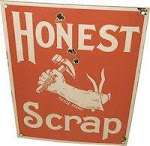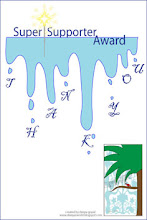Dear friends,
The British military doctors had admired the penal settlement unveiled by the French six years earlier on a rocky islet across Guyana. But their Devil’s Island would be far more ambitious. The doctors consulted Hindu texts and decided to create a psychological gulag based around the Hindi term ‘Kaalapani’, an epithet for “Hell”. It literally meant “black water”, but Kaalapani was also a myth, an ancient Indian story that told how the faithful were parted from their souls by crossing the sea.
The doctors knew that “Kaalapani” would be feared across the Empire as a godless place, a journey that would strip the transported of their caste, community and creed.
On December 11, 1857, Doctors Frederick Mouat and George Playfair reached an island chain that they knew was the ideal location. Their search for a seat of revenge against “deserters and rebels” was by now all the more pressing: British Rule was paralyzed by the Indian Mutiny. Three weeks earlier, Sir Colin Campbell had relieved the Residency at Lucknow to find that only 980 Europeans had survived a five-month siege.
Mouat and Playfair knew, as they surveyed the terrain, that British troops were burying 2000 dead. “No one came to these islands”, the doctors noted in their logs, “but the half-drowned or truly desperate.” For nine months a year, the Andaman Islands were caught in the crosswinds of competing monsoons, and they remained uninhabited apart from pockets of “unearthly and ferocious tribes”. A better place to exile the “gigantic evil” of rebellion could not be found.
On March 10, 1858, Dr. James Patterson Walker arrived at the Andaman Islands with the first batch of 200 “grievous political offenders” sweating in his ship’s hold. Transportation to Australia was outlawed in 1850, but there had been no furore when the doctor’s shipment had got underway from Calcutta eight days earlier.

Rare picture showing convicts unloading a ship at Chatham Island
“The jungle is so dense, and its entanglement by gigantic creepers so complete, as to render it impassable,” Dr. Walker wrote. Into the jungle he dispatched men in chains with orders to build their own shelters on Ross and Chatham islands. From Calcutta and Madras, from Karachi, Singapore and Burma (the present day Myanmar), the ships disgorged yet more prisoners, their crime and punishment carved on to wooden neck tickets, “so sick and debilitated that they cannot be now employed”.

An exotic view of Andamans
So many died on the voyage over, that Dr. Walker asked for another 10,000 to be shipped. From “sunrise to sunset”, Walker wrote in his diary, “I stood uncomplaining”. At the makeshift pier, he greeted new arrivals, “impressing on them the utter hopelessness of all attempts to escape”. And he frightened his charges by reading to them from Marco Polo’s journals an account of the indigenous tribes, dispersed across the 200 or so islands. “Every man not of their own nation,” Walker declaimed, “they can lay their hands on, they kill and eat.”
Within four days, the newly transported were bolting. Prisoner 61, Narain, sentenced for “having excited sedition in the cantonment at Dinapore”, hanged himself. Another convict, prisoner 46, Naringun Singh, “guilty of desertion at Nuddea”, was the first to set out. He was fished from the black water, hauled up before Dr. Walker and executed on the approval of the medic’s superiors.
By mid-April, 288 inmates, one third of those who had survived transportation to the islands, were on the run. When, on May 13, 81 of them, “driven by the murderous attacks of the savage aborigines”, limped back into Port Blair pleading for mercy and medicine, Dr. Walker hanged them all in a day.
News of the summary executions reached Calcutta. JP Grant, President in Council, dashed off a letter deploring the result: “I cannot recognize any of his (Walker’s) considerations as justifying the executions.” But Walker escaped official censure, and on Grant’s orders every inmate capable of escaping was now locked into an iron collar, so that prisoners would never again be able to flee and “excite public attention”.
The doctor was finally removed from the penal project on October 03, 1859, shortly after he had proposed branding the convicts’ forearms with their crime and sentence. Conditions worsened. Within four years, 3,500 out of 8,000 transportees had been killed or had died of fever, a staggering mortality rate that prompted an investigation.
When Sir Robert Napier arrived at Port Blair, he found the scene “beyond comprehension”. An “air of depression and despondency” clung to the Andaman Islands. Why did the prisoners have no shelter, clothes or food? Only on Ross Island, where the new superintendent, Colonel RC Tytler, had settled with his wife Harriet, was there a thriving community – a European shop, turf, flowers, shrubs and a fine sandy beach.

A British ship entering the harbour at Port Blair
Eight years later, Lord Mayo, the Viceroy of India, arrived at the Andaman Islands on an inspection tour. As the sun set over Mount Harriet, on February 08, 1872, and the Viceroy descended from the highest point on the island chain, he announced: “This is the loveliest place I think I ever saw. Plenty of room here to settle two million men!” But his vision was instantly cut down. Major General Donald Stewart, the Islands’ superintendent, described the scene at a subsequent inquiry. He heard the cry of “kill, kill” and then a convict “fastened like a tiger on the Viceroy’s back”. Major Byrne, Lord Mayo’s private secretary, reported to the same panel that his superior cried out, “They’ve hit me.”
The British Government of India concluded that the killer, Sher Ali, had no known motive. They hanged him on March 11. For Irishmen who remembered Lord Mayo’s tenure as their chief secretary, Prisoner 15557 became a martyr, a member of “the warrior dead”. Any hope that the Andaman regime would mellow was throttled.
Photos courtesy: ancestry.com; Statistics courtesy: Light of Andamans



































